There’s nothing like the satisfaction of growing your pumpkins and reaping the rewards of homegrown produce. However, during growth, there are different situations in which you suddenly may find pumpkin leaves turning yellow, and the plant begins to deteriorate. This yellowing-leaves process can be reversed if detected in time and can also be prevented. When you transfer seedlings to the ground, after pumpkin plants bloom, and during pumpkin size growth, they are the most common situations in which the leaves of pumpkin plants turn yellow. This article will teach you how to inspect the plant and detect why your pumpkin plant has yellow leaves. We will see how to solve and prevent it so you have a fabulous pumpkin harvest.
Table of Contents
Why Are My Pumpkin Leaves Turning Yellow and How to Fix It?
You are probably wondering why are my pumpkin leaves turning yellow. There are several causes why the leaves of the pumpkin plant turn yellow.
Lack of nutrients, over-exposure to light, watering stress, disease, and pests are situations where you quickly may find pumpkin leaves turning yellow. Fortunately, all these causes can be treated so the pumpkin plant recovers.
In this article, I will help you find out how to fix yellowing pumpkin leaves.
The reasons for yellowing leaves on pumpkin plants are as follows:
- Lack of nutrients
- Watering Stress
- Pests
- Diseases
- Natural aging
Fortunately, almost all these things that cause yellow leaves on pumpkins are treatable and can save your pumpkin plant. Please continue reading to learn all about pumpkin leaves turning yellow and how to fix them.
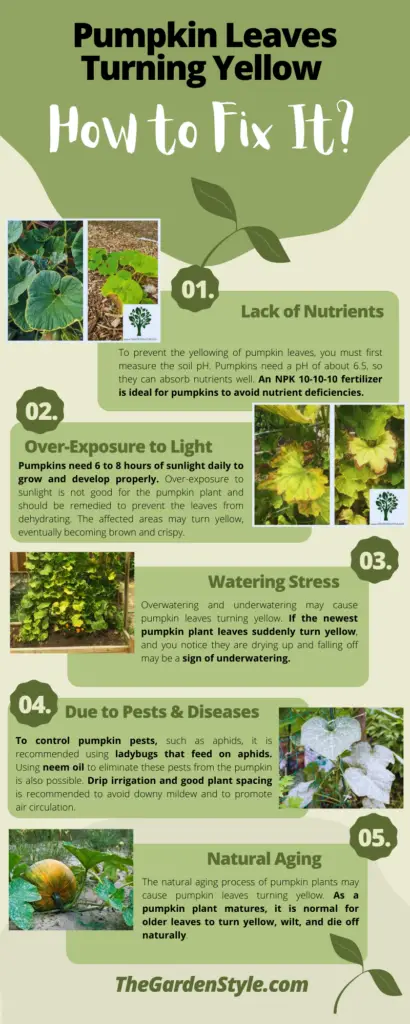
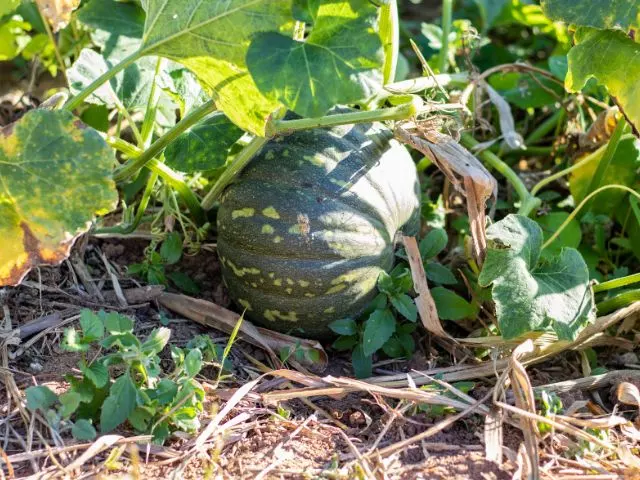
Pumpkin Leaves Turning Yellow Due to Lack of Nutrients
Nutrients are essential for all plants. With the right nutrients, the pumpkin will develop properly. Pumpkin leaves turning yellow may be due to a lack of nutrients. Pumpkin vines need nutrients such as nitrogen, phosphorus, and potassium (NPK) to develop properly.
Nitrogen helps the growth of vine foliage, and potassium contributes to the growth and production of pumpkins. Of course, other nutrients and minerals such as calcium, manganese, and iron are also important for the development and growth of the pumpkin plant.
Therefore, you can observe the yellowing patterns on pumpkin leaves to determine which nutrients are lacking. When you notice yellowing around the central veins and along the leaf edges, it indicates a potassium, magnesium, and iron deficiency. On the other hand, if the entire leaf turns yellow, it suggests a nitrogen deficiency.
To prevent the yellowing of pumpkin leaves, you must first measure the soil pH. Pumpkins need a pH of about 6.5, so they can absorb nutrients well. According to the University of Massachusetts, an NPK 10-10-10 fertilizer is ideal for pumpkins to avoid nutrient deficiencies.
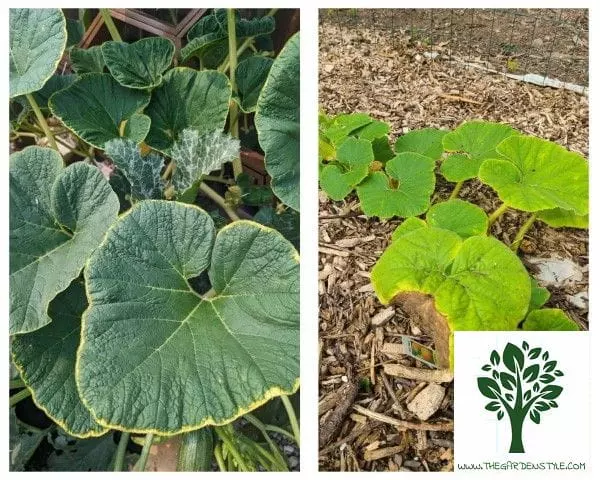
Pumpkin Leaves Turning Yellow Due to Over-Exposure to Light
Overexposure to the sun and intense heat, common when gardeners face heat waves, makes us deal with a challenging problem: pumpkin leaves turning yellow.
Pumpkins need 6 to 8 hours of sunlight daily to grow and develop properly. Over-exposure to sunlight is not good for the pumpkin plant and should be remedied to prevent the leaves from dehydrating.
When pumpkin plants receive intense sunlight, especially during hot and dry periods, the leaves may become stressed and yellow. This condition is often called “sunburn” or “sunscald.”
Sunburn occurs when intense sunlight damages the chlorophyll pigments responsible for photosynthesis. The affected areas on the leaves may turn yellow, eventually becoming brown and crispy.
Erecting temporary shade structures or utilizing shade cloth can help protect pumpkin plants from direct sunlight during the hottest parts of the day.
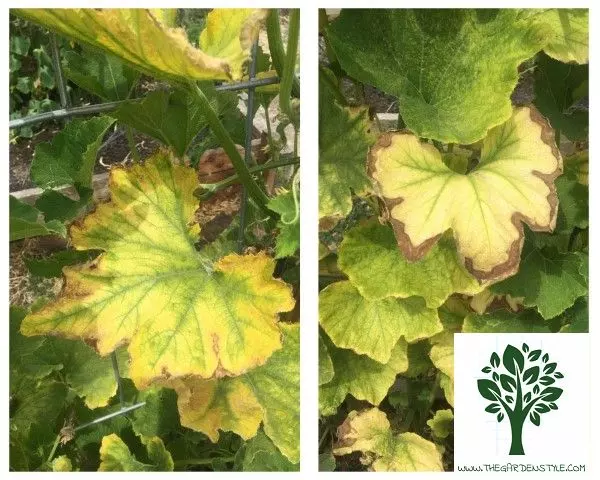
Yellow Pumpkin Leaves Due to Watering Stress
Pumpkin plants need sufficient water to survive and absorb nutrients properly. However, overwatering and underwatering may cause pumpkin leaves turning yellow, so it is vital to inspect the newest and oldest leaves and touch the ground.
If the oldest leaves of pumpkin plants turn yellow and drop off, it can be due to natural aging and die-off of the oldest leaves. However, yellow lower pumpkin leaves can also be a sign of overwatering. Check the soil with your bare hand to see if it is soggy. If so, you have been over-watering. Let the soil dry out before watering again. To know more about watering pumpkin plants and avoiding yellow leaves, I recommend you read our article on how often to water pumpkins.
If the newest pumpkin plant leaves suddenly turn yellow, and you notice they are drying up and falling off may be a sign of underwatering. Eventually, if not corrected, the drought stress will cause the older leaves to shrivel up and drop off.
Overwatering: When pumpkin plants receive excessive water, the roots can become waterlogged and oxygen-deprived. That hampers the roots’ ability to absorb nutrients properly, leading to deficiencies and yellowing leaves. Overwatering also promotes the growth of fungi and bacteria in the soil, which can cause root rot and further impair the plant’s health.
Underwatering: Insufficient watering can also cause stress to pumpkin plants. When plants do not receive enough water, they may experience wilting and leaf curling. As a survival mechanism, the plant conserves water by reducing the supply to less essential parts, such as older leaves, causing them to turn yellow.
To avoid watering stress in pumpkins, you should do the following:
- Adjust watering frequency
- Improve soil drainage
- Use mulch to promote moisture retention
Recommended Post: How to Get Rid of Mushrooms in Mulch
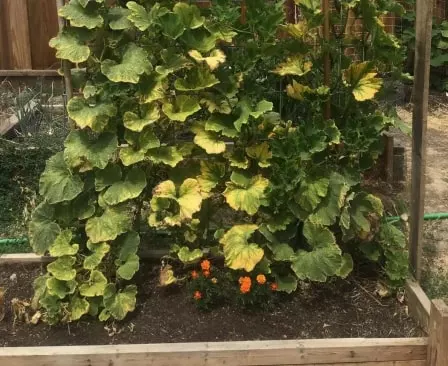
Pumpkin Vine Leaves Turning Yellow Due to Pests
Pumpkin vine leaves turning yellow. What to do? Other causes of yellow leaves on pumpkins are pests. Squash bugs are brown or gray insects that feed on the sap of pumpkin plants. They can cause wilting, yellowing, and dark spots on the leaves. Squash bugs are one of the most common pests affecting pumpkins.
Aphids are small, soft-bodied insects that suck sap from the leaves of pumpkin plants, causing their deformation and yellowing. They can reproduce rapidly and form colonies on the underside of leaves.
Squash vine borers are moth larvae that tunnel into the stems of pumpkin plants, causing wilting and yellowing of the leaves. Infested vines may eventually collapse.
Whiteflies are small, winged insects congregating on the leaves undersides, sucking sap and causing yellowing, stunted growth, and leaf curling.
Cutworms are caterpillar larvae that chew on pumpkin plant stems near the soil surface. This can cause wilting and yellowing of leaves as well as plant death.
To control these pests, such as aphids, I recommend using ladybugs that feed on aphids. One ladybug can consume many aphids in a single day. Using neem oil to eliminate these pests from the pumpkin is also possible. I recommend you read our article on how to mix neem oil for plants.
Pumpkin Leaves Yellowing and Dying Due to Disease
Why are the leaves on my pumpkin plant dying? Various diseases can lead to the yellowing of pumpkin leaves, such as bacterial leaf spot, powdery mildew, downy mildew, and Alternaria blight.
Powdery mildew is a fungal disease that appears as a white powdery coating on pumpkin plants’ leaves, stems, and sometimes fruits. This fungal disease may cause pumpkin leaves turning yellow.
Downy mildew is another fungal disease that affects pumpkin plants. It usually appears as yellow spots on the upper surface of the leaves, with a corresponding fuzzy, grayish-purple growth on the underside. Infected leaves may turn yellow and eventually die. The University of Minnesota recommends drip irrigation and good plant spacing to avoid downy mildew and to promote air circulation.
Bacterial leaf spot is a microbial disease that causes dark, water-soaked lesions on pumpkin leaves. The spots may turn yellow as the disease progresses, and the leaves can wither and die.
Alternaria blight is a fungal disease that forms circular, brown spots with concentric rings on pumpkin leaves. Infected leaves may turn yellow and eventually die.
Proper plant hygiene, adequate air circulation, crop rotation, and disease-resistant pumpkin varieties can help prevent and control these diseases.
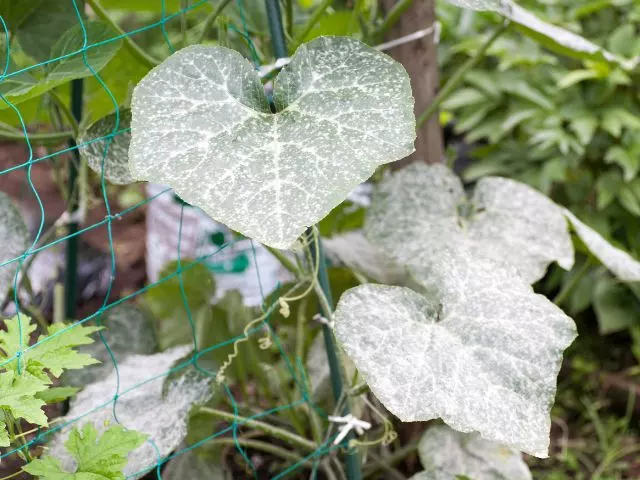
Pumpkin Leaves Yellowing and Dying Due to Natural Aging
The natural aging process of pumpkin plants may cause pumpkin leaves turning yellow. As a pumpkin plant matures, it is normal for older leaves to turn yellow, wilt, and die off naturally. That is a natural part of the plant’s life cycle and should not be a cause for concern as long as new growth appears healthy.
The plant allocates resources to support new growth and reproductive processes, so older leaves no longer efficient for photosynthesis may yellow and decline. This redistribution of nutrients and energy to support further growth is normal in many plants, including pumpkins.
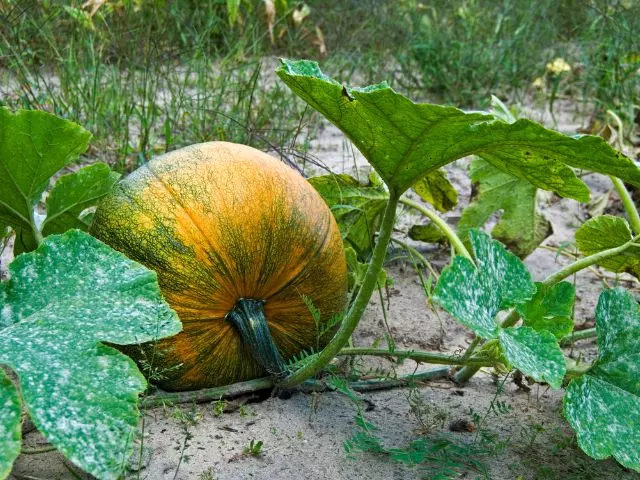
Final Conclusions Regarding Yellowing Pumpkin Leaves
When faced with the issue of pumpkin leaves turning yellow as a gardener, it is important to consider various factors that can contribute to this problem. Pumpkin leaves turning yellow can be caused by several things, including lack of nutrients, watering stress, pest, diseases, over-exposure to light, and natural aging.
Identifying the underlying cause accurately to address yellowing pumpkin leaves is crucial. Regularly observing and inspecting the plants are essential for detecting any signs of pests, diseases, or nutrient deficiencies. Adjusting watering practices to ensure proper moisture levels without overwatering or underwatering can help prevent stress-related yellowing.
Proper nutrition is essential for maintaining healthy pumpkin plants, including providing balanced fertilization and addressing specific nutrient deficiencies. Integrated pest management techniques, such as regular monitoring, identification, and appropriate control measures, can help mitigate the impact of pests and diseases.


